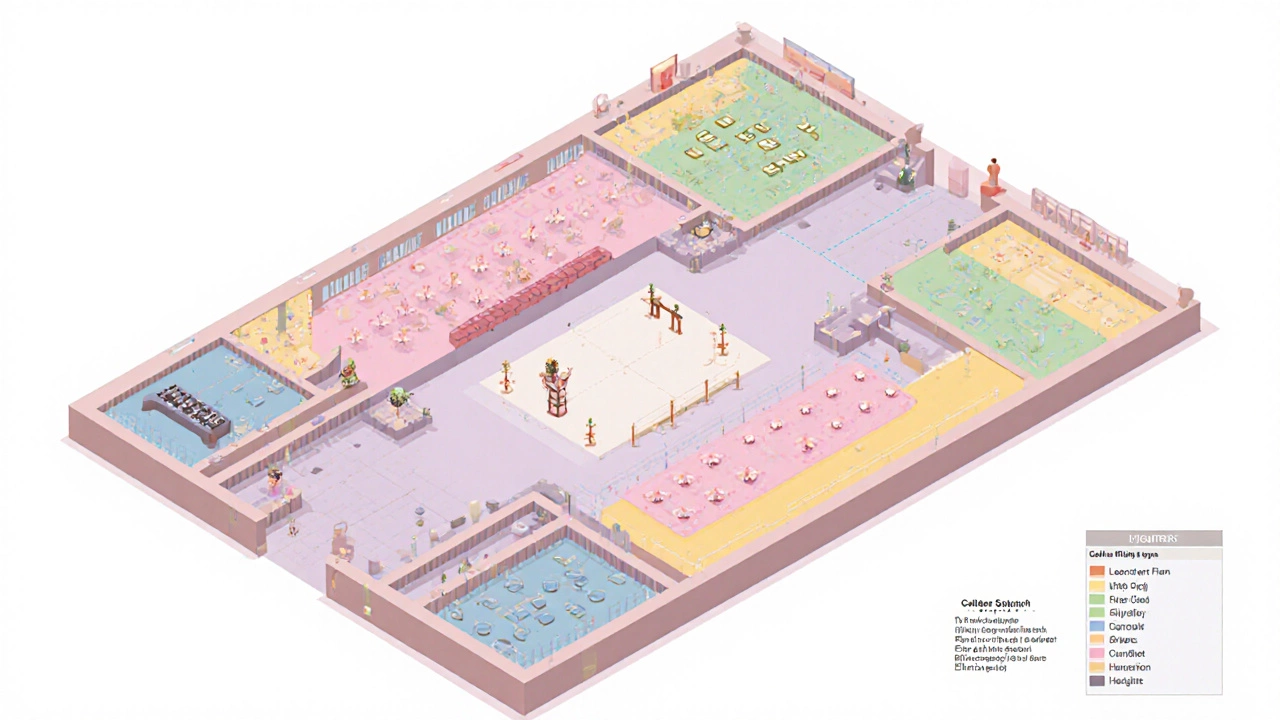Venue Layout: Designing a Seamless Wedding Space
When planning your big day, venue layout, the arrangement of ceremony, reception, and flow within your chosen space. Also known as wedding floor plan, it turns a blank room into a memorable experience. A solid venue layout starts with a clear seating chart, a map that shows where each guest will sit during the ceremony and dinner. By matching the seating chart to the room’s dimensions, you avoid cramped tables and keep sightlines open for key moments like vows and speeches. This connection creates the first semantic triple: Venue layout encompasses wedding floor plan and requires a precise seating chart. Once the seats are set, you can map out pathways for servers, photographers, and the bridal party, ensuring that movement feels natural and that no one blocks the view of the altar or dance floor. The result is a flow that feels intuitive, making guests comfortable and keeping the schedule on track.
How Catering Stations and Entrance Logistics Shape the Space
Next, think about where food will live. catering stations, designated areas for buffet, live stations, or plated service dictate traffic patterns and impact where you place tables and dance space. Positioning stations close to the kitchen but away from the main guest flow reduces bottlenecks and speeds up service. This creates another triple: Catering stations influence venue layout. At the same time, the entrance logistics, the plan for how guests, the bridal party, and the wedding car arrive and are ushered in affect where you locate the welcome table, coat check, and the bride’s first look area. Coordinating entrance logistics with the layout means the bridal car can pull up in a spot that highlights the venue’s architecture while keeping the ceremony entrance clear. When these elements work together, you get a smoother transition from arrival to ceremony, which keeps the energy high and the timeline tight.
Beyond food and entry, the placement of flowers adds both style and function. Knowing which blooms symbolize love, purity, or celebration helps you decide where to concentrate bouquets, aisle runners, and centerpieces. For example, taller arrangements work well behind the head table where they frame the couple without obstructing sightlines, while lower, scented flowers can line the aisle to guide guests toward the altar. Timing also plays a role: the ceremony start time, often highlighted on invitations, should align with your layout so that lighting, music, and guest seating all sync perfectly. This alignment ensures that the moment the couple walks down the aisle feels intentional, not rushed.
All these pieces—floor plan, seating chart, catering stations, entrance logistics, and floral design—fit together like a puzzle. When you master the venue layout, you create a space where every detail supports the next, making your wedding feel effortless and unforgettable. Below you’ll discover articles that dive deeper into each of these topics, offering step‑by‑step guides, budgeting tips, and real‑world examples to help you bring your perfect layout to life.

- Oct, 13 2025
- Comments 0